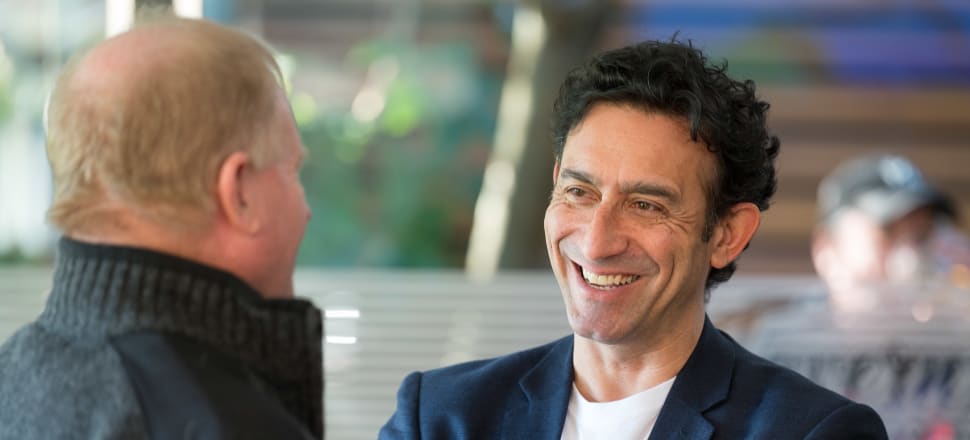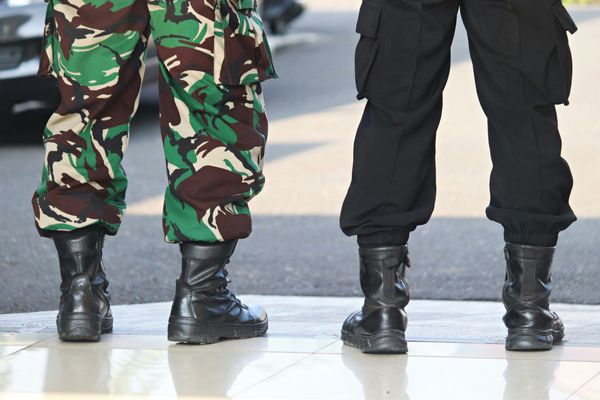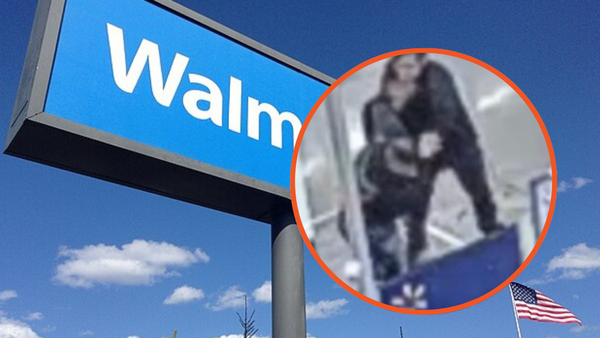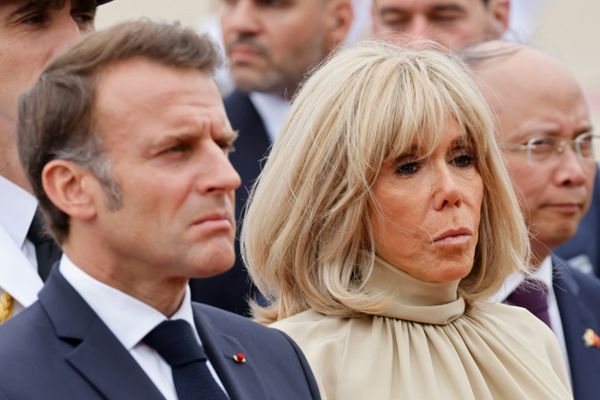
The Opportunities Party's political fortunes rest on winning a Christchurch electorate seat
To some, Raf Manji is part of the Christchurch wallpaper.
The former capital markets and currency trader was a two-term city councillor between 2013 and 2019 and inaugural chair of the Student Volunteer Army Foundation, and advised the Christchurch Foundation on how to spend $12 million raised for the victims of the March 15 terrorist attack.
But as leader of The Opportunities Party (TOP), does he now have the name recognition and ideas to win the Ilam electorate?
READ MORE: * TOP and the not terribly Teal Deal * New Conservative’s big idea is huge tax changes aimed at families with kids
Grant Duncan, associate professor of politics at Massey University, thinks he’s got a fighting chance.
“Ilam is one to watch on election night, and it’s an open, three-way race.”
The electorate splays west and north from the central city’s Hagley Park: the southern boundary follows Riccarton and Yaldhurst Roads to the south of the airport, but not as far as West Melton; and the northern border follows Papanui and Harewood Roads, before shimmying to Sawyers Arms Road and up to the Waimakariri River.
Ilam had been a safe National seat since 1996.
But at the last election (when boundary changes meant it grabbed Avonhead from Wigram, and an area west of the airport from Selwyn), longtime MP Gerry Brownlee lost to Labour’s Sarah Pallett.
Pallett’s standing again, and National’s candidate this election is fresh face Hamish Campbell.
“It’s unlikely that the Labour candidate will hold it,” says Duncan.
The city part of the electorate contains many leafy, well-to-do suburbs, and the University of Canterbury.
Duncan conjures some Chlöe Swarbrick magic for his narrative: “Like Auckland Central, you’ve got a university campus there and the student population.”
TOP has made a naked pitch for the under-30s vote with its teal card, and Newsroom’s spies tell us Manji’s been a regular presence at the university.
However, Duncan wonders if young people will turn out to vote, and if they do whether they’re enrolled in the electorate in which they’re studying.
(Figures from the 2020 election show 6555 people in Ilam aged 18-24 turned out, or 87.5 percent of enrolled voters, but the figure for those aged 25-29 dropped to 80.8 percent, or 3189 people. It was the voters aged 30-44 whose turnout dropped below 80 percent.)
With Auckland Central, Duncan remembers two polls before the 2020 election, both of which had Swarbrick running third. If he remembers correctly they had samples of about 500 people.
Something similar might happen in Christchurch this time, the academic believes. “If a poll is done in Ilam, basically shrug it off.”
“I like the sentiment, especially if it is universal.” – University of Canterbury professor Philip Schluter
TOP’s one big idea is the teal card, announced in March, a $1.5 billion policy providing free healthcare (including dental care, GP visits and five free counselling sessions a year) and free public transport to under-30s, plus a $1500 credit for bikes, e-bikes or e-scooters.
Complete a national civic service programme before the age of 23 and you’ll get a $5000 tax-free savings boost.
To pay for the teal card, TOP says $200m would come from the Climate Emergency Response fund, $550m from income tax changes (income over $180,000 taxed at 42 percent, and a new, 45 percent top tax rate for income over $250,000), and corporate tax would increase from 28 percent to 29 percent, making an extra $750m.
I ask Manji about the genesis of the teal card. His reply lasts eight minutes.
He says he’s been thinking of the concept of citizenship for a long time, starting with when he was a cub scout, or during his time with the Student Volunteer Army Foundation, or when people shopped for older people during the pandemic.
When people ask what it means to be a citizen they often refer to their rights, Manji says. But what of their duties and obligations?
It’s an even deeper question when you throw in fraying social cohesion or widening inequalities.
The TOP leader toyed with the idea of a universal basic income as a way to improve the financial literacy of young people. He also thought young people would be set up for the future if they left school with a bank account, KiwiSaver account, tax number, and health number, which were all linked.
As Manji tells it, the lightbulb moment that led to the teal card happened when he came across the gold card for superannuitants, and thought a similar scheme could be enacted for young people.
Having a teal card app will be crucial for young people. “Everything is on their phone because that’s where they live.”
Then there’s citizenship. If he hadn’t become TOP’s leader he was going to start a PhD with the working title, ‘What does it mean to be a citizen in the 21st Century?’.
France has a Civic Service Agency. Its programme for people aged 16 to 25, or up to 30 if they live with a disability, debuted in 2010. Compensation starts at €580 ($1050) a month.
In 2019, more than 140,000 people volunteered for 6-12 months – in education, sport, the environment, health, charities, local authorities or government agencies. Now there’s a push for volunteers to help with the Olympics and Paralympics in Paris.
Manji says people in New Zealand have a long history of community engagement and volunteering. For migrant communities, civic service could form part of a bigger conservation about where they fit in, he says.
“How do they become Kiwis? How do they become part of the community?
“We’ve got examples all over the world of where immigration hasn’t particularly worked and you’ve ended up with ghettoisation and people not feeling connected.”
The civic service programme, as outlined, comprises a five-day residential course, first aid, finance, and driving lessons.
On an afternoon a few weeks back Manji was speaking at the university and he noticed the audience was split between students and “essentially, grandparents”.
Older folks love the idea of civic service and investing in young people, he says.
The parents, meanwhile, they’re a bit busy and haven’t taken to it as much.
What does the teal card say about TOP?
“We’re focused on solutions. And we’re investing in future generations.”
The party can work with governments of any stripe, Manji says. Sitting MPs like the teal card, he says, because it’s non-threatening.
“Let’s say we have a chance to have some kind of influence – this is the policy that we would put on the table, because you can implement it in chunks.”
(Other TOP policies include the creation of anti-corruption commission, a Christchurch plan to build a new cancer centre and laboratory, and a tax-free threshold of $15,000.)
Picking apart the teal card
Philip Schluter, a professor of health at University of Canterbury, says under-30s in Aotearoa New Zealand are struggling, particularly with mental health and dental care.
“I like the sentiment [of the TOP policy] especially if it is universal.”
(Massey University’s Duncan, a baby boomer, also likes it, saying: “I think our young people deserve a leg up.”)
However, Schluter’s concerned about the “pragmatics”.
“There are significant resource and capacity considerations, together with trust and cultural matters in the equitable delivery of healthcare.
“Staffing is already incredibly short for GPs and mental care services. Addressing these shortages is not an overnight fix – and would require a sustained workforce training strategy. Not to mention the dentists and dental hygienists shortages.”
Simon Graney is the strategy and innovation director of Outward Bound, a non-profit specialising in personal or professional development courses.
He’s careful to say Outward Bound isn’t going to endorse any political party. But Graney thinks the idea itself – as he puts it, putting a fence at the top of the cliff rather than an ambulance at the bottom – is a good one.
“It seems to me to be a more compassionate version, a more holistic version, of the bootcamp idea, which can be implemented very badly.”
Veteran transport planner Axel Downard-Wilke – a member of the Green Party – gave a talk on free public transport in Christchurch two years ago. He’s not a fan.
Places around the world have played with it and, yes, patronage goes up, he says. But it’s an expensive exercise and, because of the loss of income, the quality of public transport generally stagnates or goes backwards.
Giving free public transport to people under a certain age – as TOP proposes – will have the same effect, but to a lower extent, Downard-Wilke says.
The slides from the transport planner’s 2021 presentation to Christchurch’s Tuesday Club showed the vast majority of trips in and around the city are taken by private vehicles.
Car is king, and that’s reflected in greenhouse gas emissions – 53 percent of the city’s climate pollution comes from transport.
Downard-Wilke’s conclusion in 2021 was that paid parking was the fastest way to change transport behaviour – “and it will fill our buses, too”.
“What we need to do as a society is to significantly improve public transport, the quality of it and the quantity of it, rather than freeze it at the current state of affairs,” he says.
Newsroom challenges Manji on the public transport aspect of the teal card.
Isn’t it the right policy in the wrong place? After all, Christchurch’s public transport system seems to be declining, while it’s more entrenched in Wellington and Auckland (where TOP also has candidates).
Christchurch’s public transport system is a work in progress, says Manji. A lot of it has to do with funding, and the supply of buses, he says, and it needs to change.
He pivots. It’s nuts that 12 years after the earthquakes, Christchurch, New Zealand’s second-biggest city, has no commuter rail.
During the 2017 election campaign, Labour promised to build it “within a few years”. Then, three years later, Wigram MP Megan Woods said she wanted shovels in the ground before the 2023 election.
“We’ve just had nothing,” Manji says, lamenting the fact there’s rail to Rangiora, to the north, and south to Rolleston, but no passenger services.
“It’s been a collective failure around public transport.”
Booking a three-year trip to Wellington, via Ilam
TOP is standing candidates in 13 electorates, mainly in urban North Island seats. Beyond Manji, Ben Peters in Dunedin is the only other South Island candidate.
Manji’s open about TOP’s realistic path to Parliament – winning Ilam. Newsroom’s rough calculations are the electorate has about the same number, 12,000-odd, of over-65s as under-30s, based on 2018 census figures.
In 2017, National’s Brownlee beat Manji, who ran as an independent, by more than 8000 votes. (Manji’s platform was bringing the Commonwealth Games to Christchurch and establishing a $1 billion fund for the city’s rebuild.)
Three years later, Brownlee got roughly the same number of votes – a touch over 16,000 – but there was a higher turnout and Labour’s Pallett surged to almost 20,000 votes.
Based on promises made on the doorstep during campaigning, Manji reckons he’s secured about 30 percent of people’s votes.
“That’s tracking where I thought things would probably be.”
Is there a magic number of votes needed to win? Well, he says, because it’s a three-horse race 13,000-14,000 might be enough.
In 2020, the Te Pāti Māori’s Rawiri Waititi won Waiariki, and with 1.2 percent of the party vote brought in co-leader Debbie Ngarewa-Packer.
TOP has bounced around in the polls, from a stunning 4 percent a few weeks ago, to just 1 percent last week.
Depending on the make-up of Parliament, Manji’s confident, if he can win Ilam, of bringing in another two MPs – something he thinks will require a 2.2 percent share of the party vote.
In 2020, TOP got 1.5 percent of the party vote, with 43,449 votes, a big drop on 2017’s 2.4 percent, or 63,261 votes.
“It’ll be a momentum thing,” Manji says.
“When it comes to just the noise of that last month of the election, it’s very difficult for any party to get that media focus. And I think this is where the teal card will come into play.”
Manji says he has one or two new policies up his sleeve, including a teal immigration visa which he’ll announce sometime in the next month.
There’s a limit to what small parties can do, he says – TOP isn’t going to propose sweeping health or education reforms, for example.
“It’s not realistic. So we have to propose things which are new, but also deliverable.”
The teal card was announced in March. Has it become lost in the noise already?
In Manji’s relentlessly optimistic fashion, he turns it into a positive. “A lot of people still won’t know about it so it is something that we can keep pushing.”







